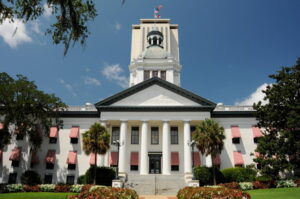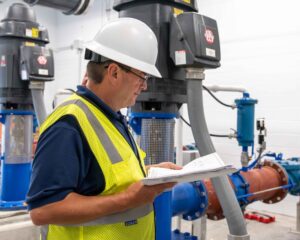By PATRICK GILLESPIE
As the 2024 Florida Legislative Session approaches in early January, state agencies in Florida have completed their legislative budget requests – formal requests for funding their programs and operations.
On Oct. 17, the Florida departments of Environmental Protection, Agriculture and Consumer Services, Fish and Wildlife Conservation Commission, and Citrus presented to the House Agriculture and National Resources Appropriations Subcommittee. Legislators received high-level overviews of how much funding agencies hope to obtain for the 2024-25 fiscal year. The 2024 Legislative Session begins on Jan. 9 and is scheduled to end March 8.
Agriculture Commissioner Wilton Simpson spoke about the impacts of Hurricane Idalia to Florida’s agriculture operations, which he estimated at about $500 million worth of damage. He also highlighted several programs he hopes to obtain funding for that will assist Florida farmers, including $4 million for a reforestation program, $15 million for a basin management action plan cost sharing program, and $300 million for the Rural and Family Lands Protection Program, which partners with willing farmers to preserve from development working agricultural lands.
“It’s a great program,” Simpson said. He championed the program as Senate President and reported that about two-thirds of the funding this fiscal year has been spent. He predicted the remaining $100 million of the $300 million appropriated to the department this year will be spent by early 2024.
The program allows the state to preserve land through agricultural land conservation easements. It seeks to create easements on valuable agricultural land in partnership with farmers and ranchers to ensure sustainable agriculture practices, protect natural resources and protect agricultural operations from urban development. Since the 2001 Rural and Family Lands Protection Act, the state has acquired conservation easements on nearly 69,000 acres of agricultural land, according to the Department.
Shawn Hamilton, the Florida Department of Environmental Protection Secretary, presented a bold vision for continued water quality funding. He said that Gov. Ron DeSantis set a goal of $2.5 billion for water resource protection and Everglades restoration funding during his first term in office, which was surpassed to the tune of $3.3 billion, with support from the Florida Legislature. Hamilton said the department will seek $3.5 billion over the next four years for the same purpose.
“We’re seeing the benefits of those investments and I think most of you have heard this – we’ve seen amazing progress in the Everglades – with 55 of those projects either breaking ground or achieving major milestones,” he said. “And you’re seeing the ecological benefits of that down in Florida Bay where you’re seeing it reach salinity goals for the first time in decades.”
For the upcoming fiscal year, the Department seeks $1.2 billion for Everglades and water resource protection, broken down over several project areas:
$740.5 million for Everglades restoration
$305 million for targeted water quality improvements
$50 million for springs
$80 million for alternative water supply
$50.8 million for algal blooms and red tide
The Department is also seeking $206 million for resilience & coastal protection, $175 million for acquisition of state land, and $211 million for cleanup programs, such as dry cleaning and underground fuel tanks cleanup. In addition, Hamilton is asking for $156 million for resilience and $50 million for beach nourishment.
Hunter Jones, the Chief Financial Officer for the Florida Fish and Wildlife Conservation Commission, presented requests broken into the five themes of: Go Outdoors, Florida, the Florida Wildlife Corridor, Resilience, Public Safety and Resource Protection, and Operational Support.
The Commission’s budget requests vary from land management and land acquisition needs to resilience programs focused on habitat restoration, coral reef restoration, and artificial reef construction, boating and hunting safety and access programs, to enhanced patrol and retention efforts, derelict vessel removal, and law enforcement equipment.
Florida Department of Citrus Executive Director Shannon Shepp discussed the mission of the department, which is focused on marketing and research. The Department is seeking more than $32 million to fund those missions, including programs focused on citrus recovery and new varieties development.
Shepp highlighted the department’s work with the University of Florida on remedies to fight citrus greening, a disease that has wreaked havoc on Florida’s citrus industry. But Shepp was optimistic about the future.
“For the first time in a very long time, our growers are talking about projects other than greening research projects,” she said. “We’re talking about grove architecture, we’re talking about AI (artificial intelligence), we’re talking about more effective methods of harvesting. It’s a very exciting time to be part of the citrus industry.” ●





















